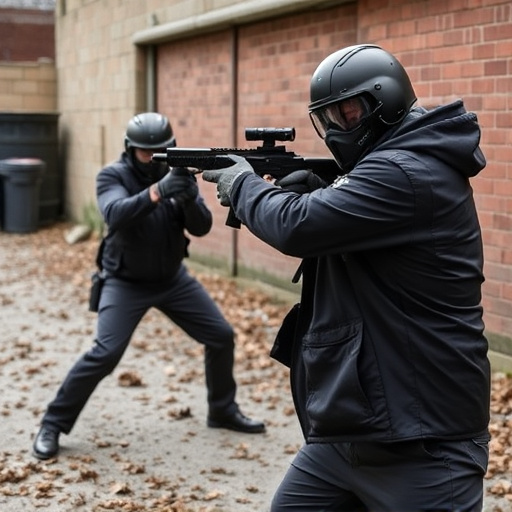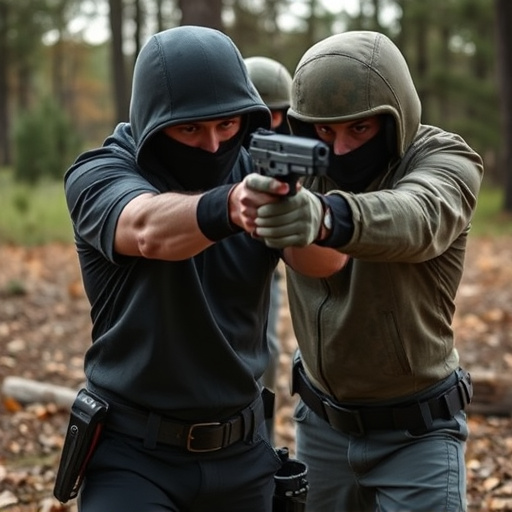Individuals with smaller hand sizes have distinct self-defense options: projectile (stun guns, tasers) and contact stun weapons (ESDs). Projectiles offer distance and disabling without direct contact but require accuracy; contact weapons provide precise control at close range (3-5 inches) but are less versatile. Best stun guns for small hands prioritize ergonomic design, balanced weight, textured grips, one-handed operation, and customizable voltage settings for improved usability and effectiveness. Legal restrictions vary based on local regulations, impacting availability.
In the realm of self-defense, stun weapons offer a non-lethal option for individuals facing dangerous situations. This article delves into the distinction between projectile and contact stun devices, highlighting their unique characteristics. We explore the advantages and disadvantages tailored to users with smaller hands, aiming to demystify the choice of best stun guns. By considering factors like ease of use, impact, and portability, we guide readers in selecting effective self-defense tools suitable for their needs.
- Understanding Projectile and Contact Stun Weapons: Key Differences
- Advantages and Disadvantages of Each Weapon Type for Small Hands
- Choosing the Best Stun Gun: Considerations for Users with Smaller Hands
Understanding Projectile and Contact Stun Weapons: Key Differences

Projectile and contact stun weapons represent two distinct categories in non-lethal self-defense tools, each with its unique mechanics and applications. Projectile stun devices, such as stun guns or tasers, operate by delivering an electric shock from a distance. They fire a projectile that makes physical contact with the target, activating the stun mechanism. These weapons are popular choices for law enforcement and personal defense due to their ability to incapacitate without causing serious injury. The range and accuracy of projectile stun weapons make them ideal for de-escalating potentially dangerous situations at a safe distance, especially for individuals with smaller hands who may find standard models easier to handle.
On the other hand, contact stun weapons, like baton stun guns or electric sticks, rely on direct physical contact with the target’s body. When activated, they release an electric current that disrupts muscle control, leading to temporary incapacitation. Unlike projectiles, these tools require close proximity to the intended subject, making them more suitable for close-quarters encounters. Best stun guns for small hands often fall into this category, designed to be compact and lightweight while still delivering a powerful stun force, catering to users with smaller physiques who need effective self-defense options without sacrificing portability.
Advantages and Disadvantages of Each Weapon Type for Small Hands

For individuals with smaller hand sizes seeking self-defense options, choosing between projectile and contact stun weapons is essential. Projectile stun devices, such as stun guns or shotguns loaded with specialized non-lethal rounds, offer a tactical advantage—they allow for distance and can disable aggressors without direct physical contact. This feature makes them ideal for those who prefer not to engage in close combat. However, the range is limited, and accuracy is crucial; misaiming could result in ineffective disabling or even injury. Moreover, legal restrictions vary widely based on local regulations, making availability an important consideration for best stun guns for small hands.
Contact stun weapons, like electroshock devices (ESDs) designed for hand use, provide direct control and precision. They are easy to handle and ensure a strong connection for optimal shock delivery. ESDs are generally legal in more places than their projectile counterparts, making them accessible options for personal protection. Yet, the close range of around 3–5 inches can be challenging in crowded or fast-moving situations. Additionally, physical interaction increases the risk of injury to both user and target, requiring careful consideration when choosing a stun weapon suitable for small hands.
Choosing the Best Stun Gun: Considerations for Users with Smaller Hands

When selecting a stun gun, users with smaller hands should consider models designed with ergonomic grip and weight distribution in mind. Compact stun guns, often marketed as best stun guns for small hands, offer powerful jolts while being easier to manage. Look for devices with textured grips and balanced weights that fit comfortably in smaller palms, ensuring precise control during use.
Additionally, features like one-handed operation and customizable voltage settings can greatly enhance usability. Many modern stun guns incorporate these design elements, catering specifically to users with reduced manual dexterity or preference for lighter, more manageable devices. Prioritizing such considerations ensures individuals with smaller hands can effectively protect themselves without sacrificing control or comfort.
When it comes to self-defense, both projectile and contact stun weapons offer unique advantages. For users with smaller hands, understanding the specific needs and constraints of your physique is key in choosing the best stun gun. In terms of considerations, lighter, compact designs can provide a more comfortable grip and better maneuverability without sacrificing power. Ultimately, the choice depends on personal preference and specific self-defense scenarios. Among the various options available, prioritizing safety and effectiveness ensures you’re prepared for unexpected situations, making smaller stun guns an excellent option for those seeking reliable protection.
